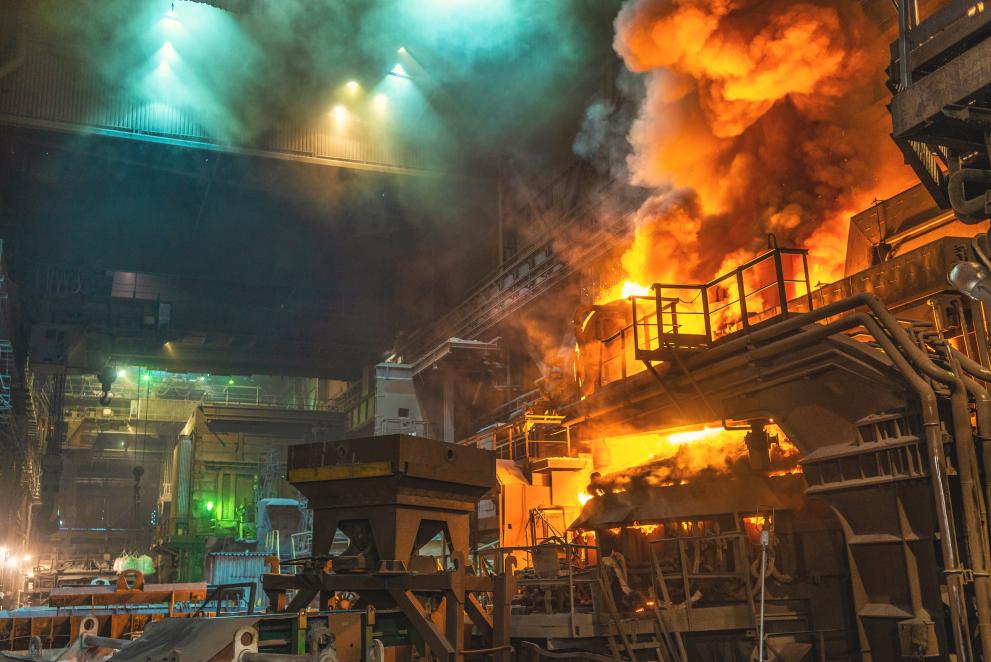
The EU’s energy-intensive industries alone contributed up to 22% of the EU total greenhouse gas (GHG) emissions in 2019. With more ambitious GHG emission reduction targets – 55% below 1990 levels by 2030 – there’s a risk of carbon leakage. Carbon leakage may occur if, to reduce costs related to climate policies, businesses were to relocate production to other countries with laxer emission constraints.
This would involve either transferring production from the EU to other countries with lower ambition for emission reduction, or EU products being replaced by more carbon-intensive imports. This could lead to an increase in total GHG emissions.
To achieve its decarbonisation objectives, the EU is moving to implement the Carbon Border Adjustment Mechanism (CBAM), a landmark tool to ensure consistent carbon cost between imports and domestic production, and that the EU's climate objectives are not undermined.
The CBAM complements the EU’s key tool for cost-effective GHG reduction, the EU Emissions Trading System (EU ETS).
JRC estimations of GHG emission intensities for goods from four energy-intensive industries – iron and steel, fertilisers, aluminium, and cement in the EU and in its main trading partners – provide scientific support to the implementation of the mechanism, as envisaged by the CBAM Regulation (EU) 2023/956.
The estimations are published in a new JRC report Greenhouse gas emission intensities of the steel, fertilisers, aluminium and cement industries in the EU and its main trading partners. The report provides the values, disaggregating between direct and indirect emissions. The GHG emission estimations include carbon dioxide, nitrous oxide (for fertilizers) and perfluorocarbons (for aluminium) linked to the production of the goods listed in Annex I to the CBAM Regulation (EU) 2023/956.
The estimated values of the GHG emission intensities (i.e. of the specific embedded emissions) serve as an input to inform the setting of the default values for the transitional period, which will be published by the end of 2023. The transitional CBAM period starts on 1st October 2023 and requires importers to collect and report data from January 2024 on emitted GHG to produce the goods. The related obligations are laid out in Implementing Regulation (EU) 2023/1773 adopted by the Commission on 17 August 2023.
Evidence provided by importers on actual emission intensities will enable a critical review of the results presented in the report.
Once the CBAM is fully implemented from 2026 onwards, importers into the EU will be required to pay for the emissions embedded in their goods as if they were produced in the EU under the EU ETS. Simultaneously, EU producers will progressively receive less free allowances, which is the main carbon leakage measure of the EU ETS.
The gradual introduction of the CBAM will coincide with the phase-out of the allocation of free allowances under the EU ETS. The potential use of the provided values will facilitate the progressive replacement of the current carbon leakage mechanisms of the EU ETS with the CBAM, which, in turn, will facilitate the effective implementation of EU climate policy.
The report details the geographical scope, focusing on the EU’s main trading partners. The emission intensities are estimated through a transparent methodology, on the basis of publicly available data. Results are validated, when feasible, by comparing them at EU level with weighted average emission intensities, taking into consideration any methodological differences. The weighted average emission intensities are gathered through the EU ETS benchmarking exercise, which relies on real plant data.
Related content
Carbon Border Adjustment Mechanism
Details
- Publication date
- 29 September 2023
- Author
- Joint Research Centre




